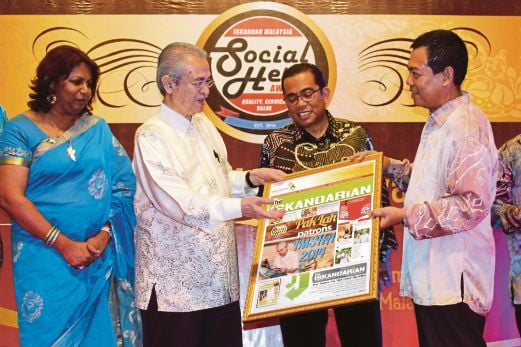
executive Datuk Ismail Ibrahim.

by Ben Tan
source NST online
JOHOR BARU: At a minute past midnight, the Singapore government started imposing the new toll charges for all vehicles, except motorcycles, leaving the republic through the Causeway today.
Up to yesterday, there was no indication that the republic's Land Transport Authority (LTA), would back down or postpone their Oct 1 date following several meetings with the Malaysian government.
The new toll rate for cars has increased from the previous SG$1.20 to SG$3.80 (RM3.03 to RM9.62), while vans and light goods vehicles saw a hike from SG$1.90 to SG$5.80.
The new rates for taxis and buses will increase from SG$0.60 and SG$1 to SG$1.90 and SG$3.10, respectively.
As an estimate, the new toll rates on Singapore’s side is about a three-fold increase, to match Malaysia’s implementation of higher toll rates since Aug 1.
Last week, the Malaysian government had offered an explanation and justification on the toll increase for all vehicles entering Singapore via the Causeway at the Sultan Iskandar Building's Customs, Immigration and Quarantine (CIQ) complex here.
Singapore decided to increase its exit toll and also add another entry toll in what is described as a tit-for-tat move by Malaysians following the increase on Johor's side of the Causeway.
However, toll charges at the Second Link remain unchanged.
In a statement last month, the Singapore LTA said the new rates were in tandem with the republic’s long-standing policy of matching toll charges at the Causeway and Second Link to those set by Malaysia.
For foreign-registered cars, including Malaysian cars, Singapore’s Causeway entry toll (entering Singapore from Johor) will be recorded in the LTA’s toll system and displayed to motorists upon entry.
Payment will be deducted only upon leaving Singapore (whether through the Causeway or Second Link), together with the exit toll, Vehicle Entry Permit (VEP) fee and Electronic Road Pricing (ERP) charges (if any).
This will be the same as the existing practice for the Second Link entry toll.
The LTA statement noted that Singapore will follow suit should Malaysia reduce or do away with the toll charges.
JOHOR BARU: RESIDENTS living along the banks of Sungai Sebulung, a tributary of Sungai Tebrau, which was once polluted as it was a dumping ground is now a tourist attraction.
The tributary cuts through Kampung Melayu Majidee, a modern Malay kampung.
Mohd Isa Ahmad, 51, head of the Kampung Melayu Majidee resident commitee, said the project, which was mooted in 2005 was a success story in the government’s effort to rehabilitate dying rivers.
“Sungai Sebulung was once one of the dirties tributaries in the state. As it runs across the back of some houses, the villagers threw their household waste into in.
“We had many problems then, as well as flash floods, besides the fact that we are living in filth.”
The Iskandar Regional Development Authority recently included a the kampung as a must-see attraction for tourists who visited the Legoland Malaysia Resort.
Isa said he had been tasked to give talks at Felda residences and other villages to share his experience about Effective Microorganism (EM) technology and the effectiveness of using food waste as fertilisers and cleaning agents.
Isa said the villagers teamed up with Kumpulan Syarikat Jamof and the Johor Baru City Council (MBJB), which provided each household with a plastic container to collect food waste.
Isa said the beautification and rehabilitation project for Sungai Sebulung was divided into two phases.
Phase One comprised of 110 houses stretching 500 metres, where villagers were taught to plant tree and shrub species like Janda Merana, Mahkota Dewa, Serai Wangi, Tongkat Aliand Misai Kucing.
The dilapidated bridge and five-foot way were also upgraded between 2005 and 2006.
In 2009, the second phase was launched, which involved 60 houses stretching 300m.
The village saw the installation of new septic tanks and an interlocking walling system for drainage.
Salijah Senan, 52, who has lived in the village for 30 years said initially it was difficult to get
the villagers to change their attitude.
“Most residents were skeptical when we were told about the local council’s plan to rehabilitate Sungai Sebulung. We did not know what EM was and how to use the mudballs that had to be thrown into the tributary once a month.
“Now we understand that fish feed on the mudballs and the stream is teeming with fish once again.”
MBJB public relations officer Abdul Aziz Ithnin said the villagers underwent a complete mindset change.
“If you drove through the village, you would see the EM Gallery and other galleries maintained by the residents with the hope of spreading the message that green living was possible.
“The villagers here now love their backyards more than they love their front entrances because of the stream that runs through the back of their houses,” Aziz said.
On another matter, Aziz said Sungai Pandan and Sungai Skudai have yet to adopt this conservation method because the two rivers, which have become dumping grounds are under the jurisdiction of the Department of Irrigation and Drainage and not the local council.
On the local council’s efforts to get other villagers to adopt the EM concept, Aziz said many were skeptical but he believed that nothing was impossible.
“Sungai Sebulung is an example for other villages who want to adopt sustainable green living.”
Meanwhile, Tanah Sutera Development Sdn Bhd, a private property developer here has adopted EM to clean its shopping mall and as raw building materials for its development projects.